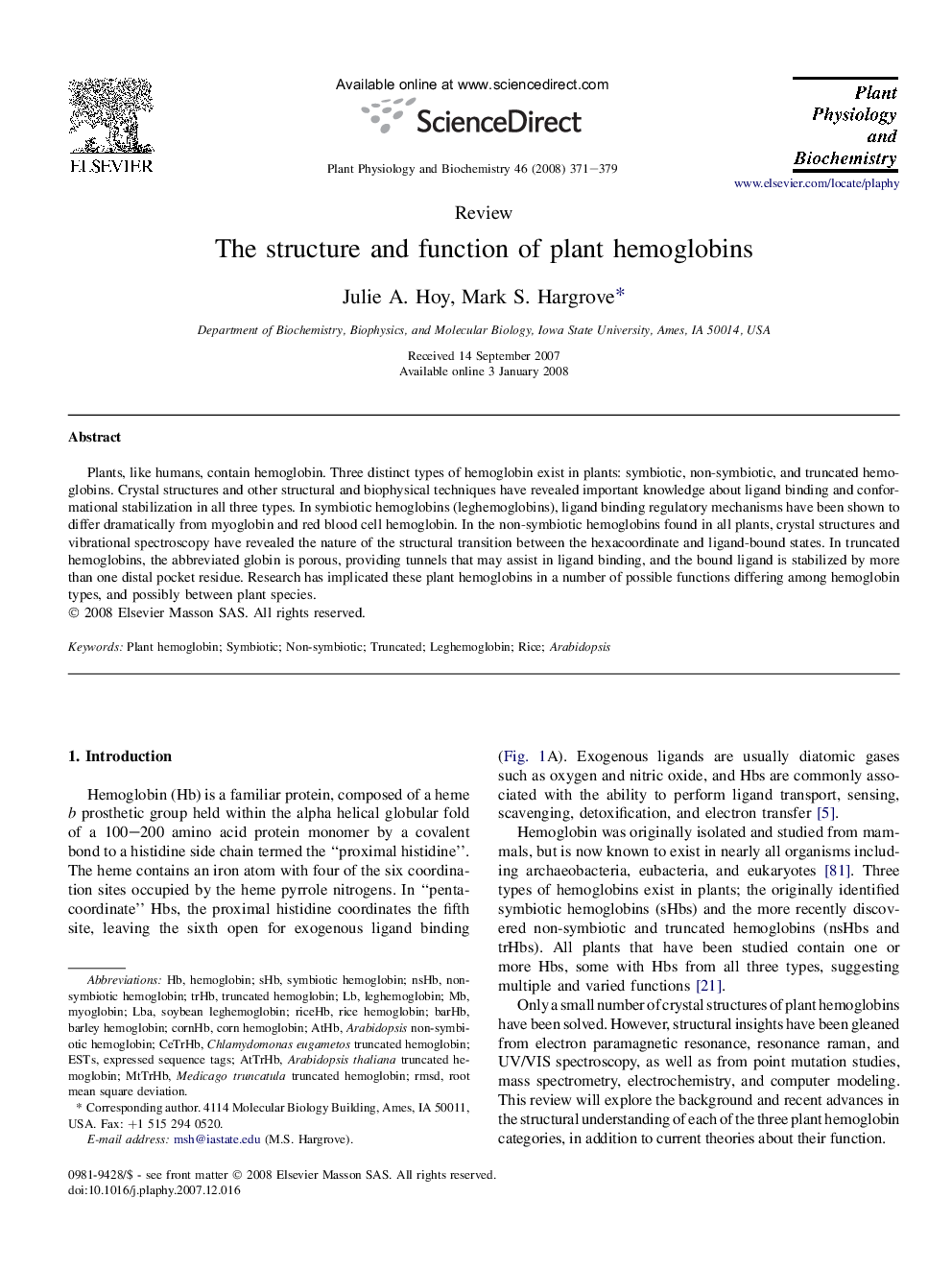| Article ID | Journal | Published Year | Pages | File Type |
|---|---|---|---|---|
| 2015351 | Plant Physiology and Biochemistry | 2008 | 9 Pages |
Plants, like humans, contain hemoglobin. Three distinct types of hemoglobin exist in plants: symbiotic, non-symbiotic, and truncated hemoglobins. Crystal structures and other structural and biophysical techniques have revealed important knowledge about ligand binding and conformational stabilization in all three types. In symbiotic hemoglobins (leghemoglobins), ligand binding regulatory mechanisms have been shown to differ dramatically from myoglobin and red blood cell hemoglobin. In the non-symbiotic hemoglobins found in all plants, crystal structures and vibrational spectroscopy have revealed the nature of the structural transition between the hexacoordinate and ligand-bound states. In truncated hemoglobins, the abbreviated globin is porous, providing tunnels that may assist in ligand binding, and the bound ligand is stabilized by more than one distal pocket residue. Research has implicated these plant hemoglobins in a number of possible functions differing among hemoglobin types, and possibly between plant species.
